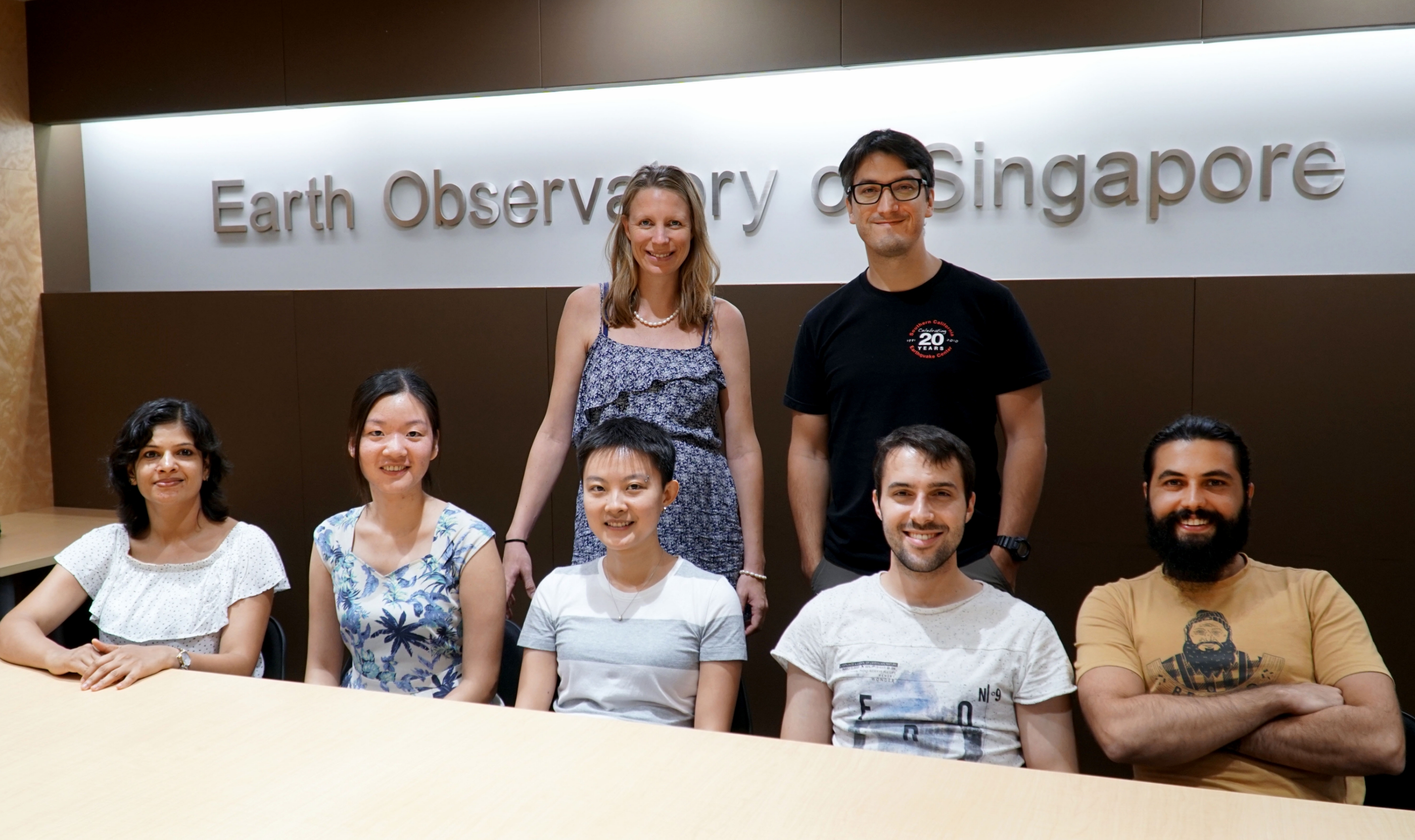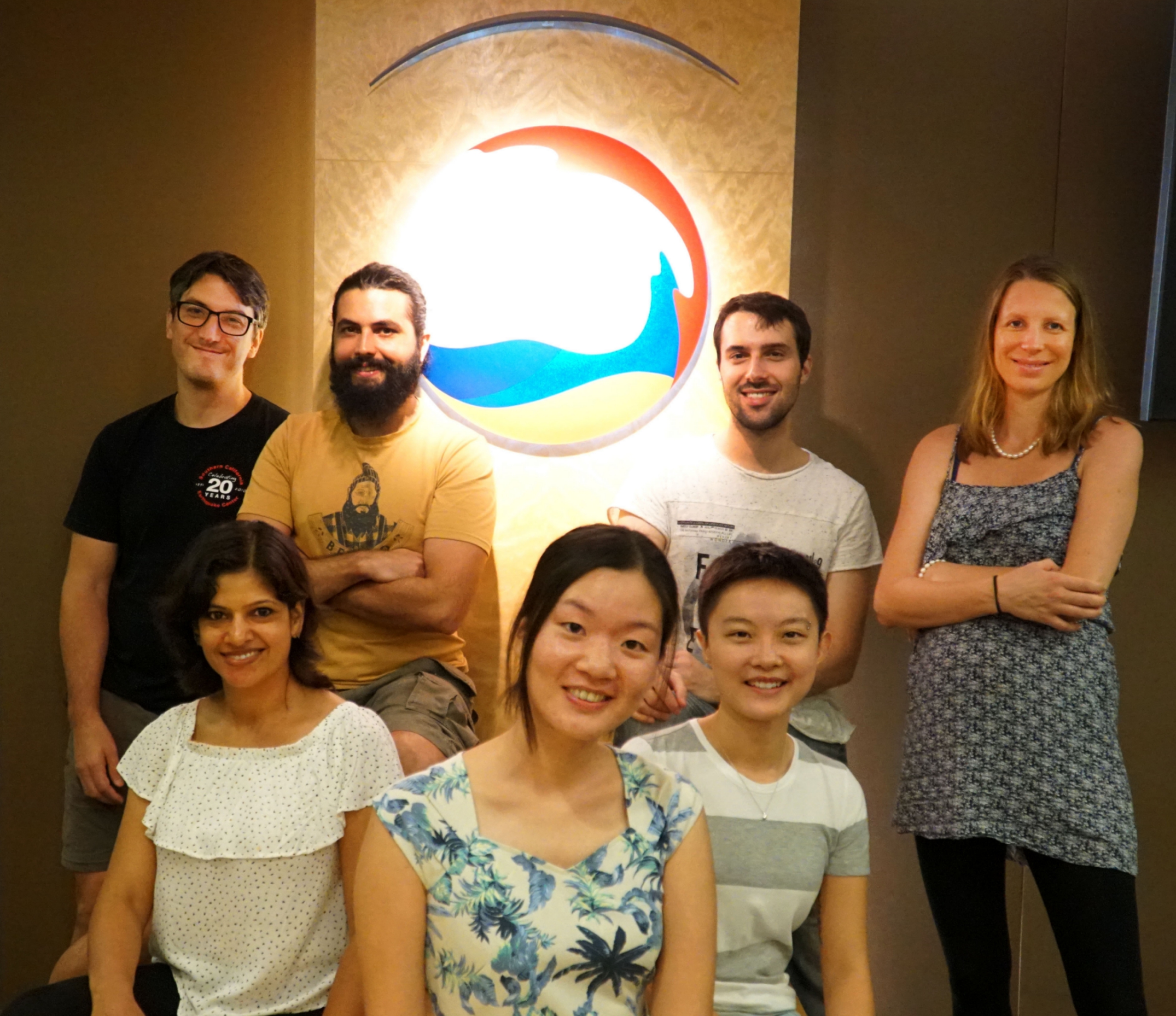
This year's Dr Stephen Riady Geoscience Scholars Fund, in its second year, was awarded to five PhD students from the Earth Observatory of Singapore (EOS). This scholarship provides opportunities for EOS postgraduate students to explore the Earth’s dynamic processes, and ensure greater resilience and safety of people, cultures, and economies in the region.
Selected by a panel of four reviewers made up of EOS faculty members – Professor Kerry Sieh, Assistant Professor Mikinori Kuwata, Assistant Professor Caroline Bouvet, and Assistant Professor Sylvain Barbot – the five recipients were impressively creative, articulate, and motivated.
This year’s awards totaling S$57,816 were given to Mr Stephen Pansino, Ms Li Weiran, Ms Lee Wen-Chien, Ms Deepa Mele Veedu, and Mr Fabio Manta. The details of their proposed research projects are as follows:

Stephen Pansino (supervised by Assistant Professor Benoit Taisne)
Dike-magma reservoir interaction: an analogue perspective
When a magmatic reservoir’s pressure changes, the stresses in the surrounding crust must also change to adjust to the new conditions. Dikes, which may propagate near a reservoir, have been shown in previous studies to prefer an orientation that is governed by the orientation of principal stresses. The influence of a magma chamber on dikes is even suspected to have played a role in the largest eruption of the 20th century – the eruption of Katmai-Novarupta volcano, which led to the collapse of Katmai’s edifice – while the magma was emitted through a vent located on its flank.
Li Weiran (supervised by Associate Professor Fidel Costa)
Experiments on chlorine, fluorine, and hydroxyl diffusion in apatite with applications for magma ascent rates
Explosive eruptions are typically more hazardous than effusive ones, and so understanding what controls different eruption styles is among the hottest volcanology topics. Key variables, such as melt volatiles and magma ascent rates, are traditionally constrained using melt inclusions, but these are absent in many deposits. In the past year, apatite (a group of phosphate minerals) was used as a new tool to address these questions. However, key physical parameters, such as volatile diffusion rates, are poorly known. By performing diffusion experiments of volatiles in apatite, this mineral can serve as a robust tool to understand magma ascent rates and eruption styles.
Lee Wen-Chien (supervised by Assistant Professor Mikinori Kuwata)
To contribute, or not to contribute: effects of organic-rich phases in aerosol particles on cloud condensation nuclei activation
The tropical Asian haze has severe impacts on our climate. However, how organic species contribute to cloud condensation nuclei activation remains unclear, which hampers estimations on aerosol-cloud-precipitation interaction. Recently, frameworks of liquid-liquid phase separation and water solubility distribution are thought to affect the cloud condensation nuclei activation process of organic aerosol particles. However, the ideas have not been verified. By examining the hypotheses using the developed 1-octanol-water partitioning method, it could be possible to separate organic compounds into aqueous and organic-rich phases. In addition, this would allow for the analysis of water solubility distribution of organic compounds in aqueous phases.
Deepa Mele Veedu (supervised by Assistant Professor Sylvain Barbot)
Mapping a continuum of slow-slip regimes by rock frictional sliding
Observations of earthquakes, slow-slip events, and tremors on several plate boundaries indicate a continuum of fault slip modes in relieving tectonic stresses. Although numerical results show a continuum of slow-slip regimes, this phenomenon is not fully captured in rock friction experiments. To find out the factors controlling the inter-event time of the slip events, rock-on-rock friction experiments could be used to reproduce a spectrum of slow slip behaviours. The study implies that a unified view incorporating slow slip is essential for assessing earthquake hazards, which may shed light on using precursory slow earthquakes as forecasting tools.
Fabio Manta (supervised by Assistant Professor Benoit Taisne)
On the feasibility to mine GPS data to remotely assess regional volcanic hazard
Volcanic ashes can have disastrous impacts on aviation and cause important economic losses. To monitor volcanoes and assess the risks associated with volcanic ash, satellite-based remote sensing is commonly used. However, satellite-based remote sensing in Southeast Asia is challenging due to the presence of a semi-permanent cloud cover. By developing a new method based on GPS data analysis, it might be possible to overcome this limitation to remotely detect volcanic eruptions and estimate the ash distribution into the atmosphere. Therefore, it is important that tests be conducted to assess whether the use of the available GPS network can provide additional information to complement the existing monitoring system.